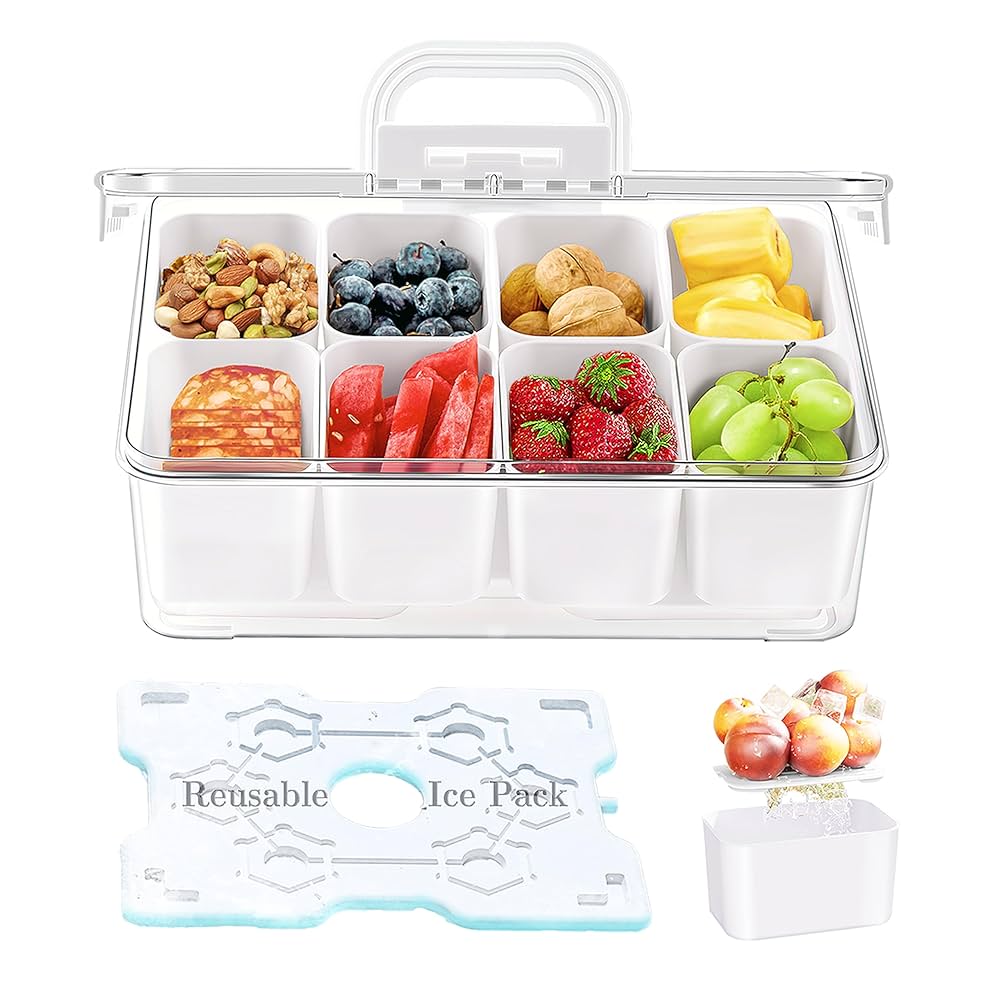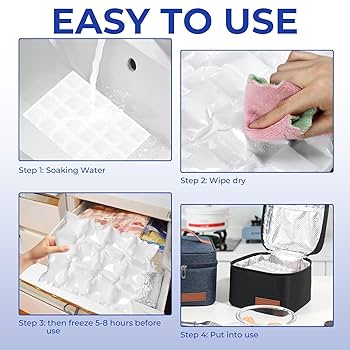Are you looking for a simple way to keep your tank cool without risking damage? Using ice packs can be a great solution, but only if you do it the right way.
If you’re not careful, you could harm your tank or reduce its efficiency. You’ll discover easy tips to use ice packs safely and effectively. Keep reading to protect your tank and get the best results every time.

Credit: www.temu.com
Benefits Of Ice Packs In Tanks
Using ice packs in tanks helps keep water temperatures steady. This is important for the health of fish and other aquatic life.
Ice packs provide an easy way to control water temperature without using electricity or complex tools.
Cooling Effects On Water Temperature
Ice packs lower the water temperature gradually. This helps prevent sudden changes that can harm aquatic life.
- Keep water cool during hot days
- Prevent overheating of sensitive species
- Maintain a stable environment for plants and fish
- Extend the life of the tank ecosystem
Stress Reduction For Aquatic Life
Stable temperatures reduce stress in fish and other animals. Stress can lead to illness and weak immune systems.
| Stress Cause | Effect on Aquatic Life |
| High Temperature | Increased heart rate, reduced oxygen |
| Sudden Temperature Change | Shock, weakened immune response |
| Stable Temperature | Calm behavior, better health |
Choosing The Right Ice Packs
Using ice packs in tanks helps keep water temperatures safe. Picking the right ice pack is important for the health of the tank’s inhabitants.
Consider size and material to avoid harm. Also, choose non-toxic options for safety.
Size And Material Considerations
Choose ice packs that fit well inside your tank. Large ice packs may cool unevenly. Small packs cool faster but may need more replacements.
- Pick packs that match your tank size.
- Look for durable materials that do not leak.
- Consider flexible packs for better placement.
- Avoid packs with sharp edges or hard plastic.
Safe, Non-toxic Options
Ice packs must be safe for fish and plants. Use packs that are free from harmful chemicals. Non-toxic gel and food-grade materials are best choices.
| Ice Pack Type | Material | Toxicity Level |
|---|---|---|
| Gel Packs | Polymer Gel | Low |
| Water Packs | Sealed Plastic | Low |
| Salt Water Packs | Salt Solution | Medium |
| Alcohol Packs | Alcohol Gel | High |
Proper Placement Techniques
Using ice packs in tanks helps keep the water cool for fish. Proper placement of these ice packs is important. It ensures the fish stay safe and comfortable.
Incorrect placement can stress or harm the fish. Follow simple techniques to keep ice packs secure and away from direct contact with fish.
Avoiding Direct Contact With Fish
Ice packs should never touch the fish directly. Cold surfaces can cause shock or injury. Use barriers or holders to keep ice packs separate from fish.
- Place ice packs on one side of the tank.
- Use a mesh or plastic divider to separate the pack from fish.
- Wrap ice packs in a cloth or towel before placing.
- Check fish behavior regularly to spot signs of stress.
Securing Ice Packs Within The Tank
Ice packs must stay in place to prevent floating or sinking. Loose ice packs can harm fish or damage tank equipment.
| Method | Description |
| Velcro Straps | Wrap and fasten ice packs to tank walls securely. |
| Net Holders | Use mesh bags to hold packs and hang inside tank. |
| Weighted Covers | Place weights on wrapped packs to keep them at the bottom. |
| Clip Attachments | Use clips designed for tanks to fix packs in place. |
Monitoring Temperature Changes
Keeping the right temperature in tanks is very important. Using ice packs helps control heat. Watching temperature changes helps keep tanks safe.
Careful monitoring stops sudden temperature shifts. This protects fish and plants inside the tank. Let’s look at how to do it well.
Using Thermometers Effectively
Choose a good thermometer for your tank. Place it where you can see it easily. Check the temperature at the same time each day.
- Use digital or glass thermometers made for tanks.
- Put the thermometer away from ice packs to get true readings.
- Record temperatures in a log to track changes over time.
- Clean the thermometer regularly to keep it accurate.
Adjusting Ice Pack Usage Based On Readings
Change how many ice packs you use depending on the temperature. Watch the tank’s reaction to keep it steady. Use less or more ice packs as needed.
| Temperature (°F) | Action for Ice Packs |
| Above 78 | Add an ice pack |
| 72 to 78 | Maintain current ice pack level |
| Below 72 | Remove or reduce ice packs |
Frequency And Duration Of Use
Using ice packs in tanks helps keep water temperature cool. It is important to use them carefully. Too much cooling can stress the tank life.
Knowing how often and how long to use ice packs keeps the tank safe. This guide explains the best way to balance cooling and avoid sudden drops.
Balancing Cooling And Stability
Ice packs must cool the tank without causing big swings in temperature. Use them in short periods to keep water stable. Long use may shock tank animals.
- Use ice packs during the hottest hours only.
- Limit use to 1-2 hours per session.
- Allow water to return to normal temperature slowly.
- Check temperature every 30 minutes.
Preventing Sudden Temperature Drops
Sudden cold changes can harm fish and plants. Avoid adding ice packs all at once or leaving them too long. Keep temperature changes gentle and gradual.
| Action | Recommended Practice |
| Ice pack placement | Place outside or near tank edges |
| Duration per use | 30 to 120 minutes |
| Frequency | Once or twice daily only |
| Temperature check | Every 30 minutes while cooling |
| Water mixing | Stir water gently after cooling |

Credit: www.amazon.ca
Potential Risks And How To Avoid Them
Using ice packs in tanks can help maintain a stable temperature. But there are risks if not used correctly.
This guide explains potential issues and offers solutions for safe ice pack use in tanks.
Condensation And Water Quality Issues
Condensation can form on ice packs, leading to water quality problems in tanks.
- Ensure ice packs are sealed properly to prevent leaks.
- Monitor tank water parameters regularly.
- Use a lid to reduce evaporation and condensation.
Physical Harm To Tank Inhabitants
Ice packs can harm fish and other tank inhabitants if they come into direct contact.
Place ice packs outside the tank or use a barrier to keep them away from the inhabitants.
| Issue | Solution |
| Direct Contact | Use barriers |
| Condensation | Seal ice packs |
| Water Quality | Monitor parameters |
Alternative Cooling Methods
Keeping your tank cool is important for the health of your aquatic life. Using ice packs is one way, but there are other methods too.
Let’s explore different ways to keep your tank cool. This will ensure a safe environment for your fish and plants.
Fans And Chillers
Fans can help cool your tank by increasing air movement. They are easy to set up and use.
Chillers are machines that cool the water directly. They are more effective but can be costly.
- Fans are good for small tanks.
- Chillers work well for larger tanks.
- Both require electricity to run.
Plant And Tank Design Adjustments
Plants can help keep your tank cool. They provide shade and absorb heat from light.
Designing your tank with proper shading and plant placement can reduce heat. This keeps the water temperature stable.
- Use floating plants for shade.
- Place taller plants in sunny spots.
- Choose plants that thrive in cooler temperatures.

Credit: www.amazon.ca
Frequently Asked Questions
How Do Ice Packs Affect Water Temperature In Tanks?
Ice packs lower the water temperature gradually, preventing sudden cold shocks. This helps maintain a stable environment for aquatic life and avoids stress or harm to tank inhabitants.
Can Ice Packs Harm Fish In Aquariums?
If used improperly, ice packs can cause temperature fluctuations that stress fish. Always monitor temperature closely and avoid direct contact between ice packs and tank water.
What Is The Safest Way To Use Ice Packs In Tanks?
Wrap ice packs in a waterproof barrier before placing them near the tank. Monitor water temperature frequently and remove packs once desired cooling is achieved to avoid overcooling.
How Long Can Ice Packs Safely Stay In Tanks?
Ice packs should stay in or near tanks only until the temperature stabilizes. Typically, this ranges from 30 minutes to a few hours depending on tank size and conditions.
Conclusion
Using ice packs safely in tanks helps protect fish and plants. Keep ice packs outside the tank to avoid direct contact with water. Monitor the tank temperature often to prevent sudden drops. Choose the right size and type of ice pack for your tank.
Proper use keeps the environment stable and healthy. Small steps make a big difference in tank care. Stay careful and watch your tank closely for the best results. Safe cooling helps your aquatic life thrive and stay happy.
